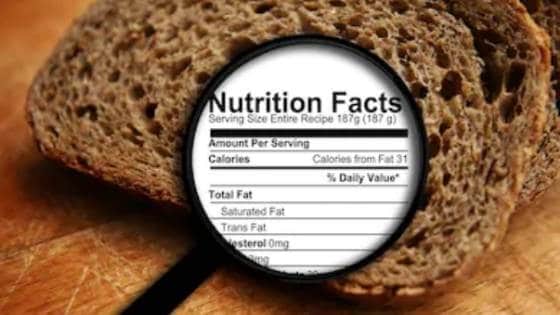Regardless of whether or not you buy local, produce tends to go through quite a journey before reaching your home, which is why you should learn to clean produce safely.
Produce can get contaminated during the growing phase by animals, harmful substances in the soil or water, and poor hygiene among workers.
It’s not uncommon for produce to pick up things like dirt, wax, and pesticides.
If you’re not careful, contamination can even happen during food preparation or improper storage.
The Center for Disease Control (CDC) estimates that nearly 48 million people get sick from foods contaminated with harmful substances every year. (1)
Here’s what we’ll cover in this article:
Table of Contents
What to Look for When Buying Produce
Make sure to buy produce that isn’t bruised or damaged, as this can be home to bacteria.
When buying pre-cut produce like sliced fruits or bags of spinach, make sure they’re either refrigerated or on ice both in the store and at home.
How to Clean Your Produce Safely
1. Wash Your Hands Before Handling Produce
Last thing you want is to get germs from your hands to your produce before and after cleaning them. Wash your hands with soap and water for about 20 seconds.
2. Use Cold Water Instead of Hot Water
While hot water and soap might be recommended to clean things like dishes and utensils to kill germs and bacteria, it is not recommended for produce.
Hot water will cause fruits and vegetables to shrivel, bruise, or scald.
3. Do Not Use Soap
Another common practice is to clean produce with soap, however, both the FDA and the U.S. Department of Agriculture (USDA) do not recommend doing so.
Most fruits and vegetables are porous, which makes it easy for things applied on the outside, such as soaps and detergents, to come inside.
Consuming soaps or detergents can cause stomach issues and are not approved to use on food by the FDA. (2, 3)
When it comes to produce sprays and rinses, there’s no evidence of them being more effective than water in cleaning produce.
4. Cut Away Bruised or Damaged Areas
Remove the outer layer of leafy greens before cleaning and cut away bruised or damaged areas because bacteria that can cause illness can thrive in those places.
Also, refrigerate fresh-cut produce like fruits or salad as soon as possible for best quality and food safety.
5. Do Not Wash Produce Before You’re Ready to Eat Them
Cleaning all of your produce at once might sound like a good time-saving idea, however, it’s recommended that you only wash the produce you’ll be eating right away.
All bacteria need moisture (or water) to grow and reproduce, therefore, washing produce before you’re ready to eat them makes them a perfect environment for bacteria. (4)
This bacteria can also cause produce to go bad quicker, which can be an inconvenience if you’re on a budget.
6. Rinse Food Before You Peel or Cut Them
Even if you’re not eating the skin, wash produce first so dirt and bacteria are not transferred from the surface when peeling or cutting produce.
7. Wash Foods With Only Cold Water
A study (5) comparing washing produce with vinegar against plain water, and a commercial product called Veggie Wash done by the Institute of Agricultural and Environmental Sciences at Tennessee State University found that there wasn’t really any difference between them.
All three methods were effective at getting rid of most bacteria. They found that plain water can remove about 98% of bacteria when it’s used to rinse and soak produce.
Just make sure that you’re being thorough when washing your produce. Wash each product for at least 30 seconds before eating.
For produce with more crevices, like broccoli and cauliflower, a two-minute soak is recommended.
If you’re using the sink to soak the produce, make sure to clean the sink first to avoid cross-contamination.
8. Use a Veggie Brush
You can use a vegetable brush to clean hard produce like potatoes, apples, and carrots.
For softer produce like tomatoes and berries, use your hands but make sure to rub them nicely while being rinsed.
9. Cleaning Produce With Baking Soda
If you’re not a fan of washing your produce with just plain water, you can wash them with baking soda.
The Journal of Agricultural and Food Chemistry found that soaking produce in baking soda was the most effective method of removing pesticide residue from apples, even when compared to Clorox bleach (you should never use Clorox bleach to clean foods).
Here’s how to clean your produce with baking soda:
- Clean the sink or bowl you’ll be using.
- Fill the sink or bowl with water.
- Add a teaspoon of baking soda.
- Add your produce and let them soak for 12-15 minutes.
- Remove produce from sink, rinse, and scrub harder produce with a vegetable brush.
Remember to only clean the produce you’ll be eating right away. If you’re only eating an apple or two, a pinch of baking soda should be enough.
10. Cleaning Produce With Vinegar
Another alternative if you don’t want to clean your produce with plain water is to use vinegar.
However, the effectiveness of sanitation with vinegar will depend on which bacterium or fungus is on the produce, the concentration of the vinegar, temperature of the water, and the amount of time the produce is left to soak.
Most bacteria and fungi can be easily removed from produce by using vinegar.
How to Clean Produce With Vinegar
If using vinegar, you want to stick to a ratio of three parts water to one part vinegar, as it has been shown to be the most effective.
For example, if you use 3 cups of water, you should add 1 cup of vinegar. If you use 3 gallons of water, you should add 1 gallon of vinegar.
You can leave your produce soaked on the water/vinegar solution for 10 minutes, and if you have different types of produce, it might be ideal to clean them separately.
Keep in mind that vinegar will not extend shelf-life of your fruits and vegetables. So no need to use it to make your produce last longer.
Are There Produce You Want To Clean More Thoroughly Than Others?
Some fruits and vegetables tend to pick up more dirt, wax, and pesticides.
The Environmental Working Group, a nonprofit that advocates for policies that protect human health, releases a yearly list of produce items likely to be the highest in pesticides called the Dirty Dozen.
Here’s this year’s Dirty Dozen list (in order):
- Strawberries
- Spinach
- Kale
- Nectarines
- Apples
- Grapes
- Peaches
- Cherries
- Pears
- Tomatoes
- Celery
- Potatoes
They also release a list of the produce with the smallest amounts of pesticide residues called the Clean Fifteen.
Here’s this year’s “Clean Fifteen” list (in order):
- Avocados
- Sweet Corn
- Pineapple
- Onions
- Papaya
- Sweet Peas
- Eggplant
- Asparagus
- Cauliflower
- Cantaloupe
- Broccoli
- Mushrooms
- Cabbage
- Honeydew Melon
- Kiwi
Want to explore more? Check out this article on why organic foods are not as healthy as you think.
Do you have more questions on how to clean produce safely? Let me know in the comments section below!
If you’re ready to start your weight loss journey, the 12-Week Fat Loss Challenge is the place to start!

This plan helps men and women lose fat without starving themselves or giving up their favorite foods.






